By Janet Browne, Senior Producer, Audience Development; Bryony Shepherd, Head of Interpretation; Lenny Cherry, Exhibition Interpretation Producer
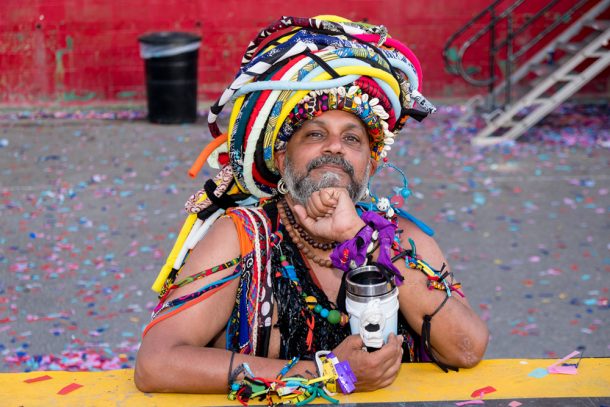
For every museum object, there are countless stories that can be told, and many voices that can unlock them. But how can we make those voices heard? Cultural institutions today have a responsibilty to offer multiple perspectives, to highlight that the ‘museum voice’ is a subjective one, and to seize this moment to acknowledge uncertainties, root out assumptions, question cultural facts and present personal stories. Here at the V&A we believe that collaborating with communities on our exhibition-making process is key. By drawing on lived experiences and cultural knowledge alongside research, we can make exhibitions that truly resonate with our audiences, and actively include those with stories to share.
Last year we announced plans for a major exhibition celebrating the irresistible creativity, ingenuity, and global impact of contemporary African fashions. Opening next week, Africa Fashion showcases over 250 objects, including textiles, photographs, and some iconic contemporary and mid-20th-century African fashion collections – many on display for the first time.
From the outset, the Curatorial, Interpretation and Learning teams wanted the exhibition to reverberate with multiple and varied African voices and perspectives. We wanted to reveal the richness and diversity of African histories and cultures, using fashion as a catalyst. But as a museum located in the Global North with an unavoidable colonial past, it was imperative we sought out insights both from creatives on the continent itself and members of the African diaspora closer to home. So we worked together to devise a series of multi-generational community focus groups to exchange ideas and provide essential feedback and critique of the Africa Fashion exhibition at key stages in its development.
We made a call-out for 20 members of the African diasporic community who could work as a collective, and within just two hours of sending the request, more than 70 people with wide-ranging interests in art, design, and performance got in touch. This was a fantastic response that shows the appetite communities have for engaging in museum storytelling, and in particular how much the Africa Fashion exhibition matters to its community. As fashion is and always has been at the heart of African creativity, it was easy to find participants willing to learn more but also to offer their own expertise, advice, and guidance on areas that were important to their cultural heritage.
Working with multiple perspectives yields many rich conversations. But to make sure these conversations would meaningfully inform the exhibition development process, we needed to outline aims before we began. Through a series of constructive and critical focus group sessions, we hoped to:
- Sense-check the overall voice that we would use to narrate the stories of Africa Fashion
- Discuss how to foreground multiple voices, perspectives, and dialects within the exhibition
- Find a way to prompt a feeling of ownership of the exhibition for members of the African and African diaspora communities
- Engage with new audiences
Coordinated by Janet Browne, Senior Producer in Audience Development and Bryony Shepherd, Head of Interpretation, we held focus group meetings in October and December 2021. We were lucky to be able to host these sessions in person (while of course sticking to Covid safety protocol), creating a supportive space for participants to debate ideas with our team, while also offering a chance for them to build personal connections between themselves – and with the exhibition narrative – as their voices were heard.
As we’d hoped, the groups brought invaluable insights to this complex story of African fashions, shedding light on the role African diasporic lived experiences have within that. In particular, discussions about the tone of voice used to narrate the exhibition, how and if we could incorporate African languages, how we should emphasise the multiplicity and diversity of cultures on the continent, and ideas for the events programme, were crucial. It was also important to consider how to acknowledge the group’s input, both within the exhibition and in raising public awareness about this kind of community engagement. We heard loud and clear that finding ways for continued community engagement beyond the run of the exhibition was fundamentally important – this must be the beginning of our relationship, not the end. Below, 11 members of the adult focus group share their own photographic fashion stories, alongside memories of being part of the focus group.
A Story in a Photograph
Avril Horsford
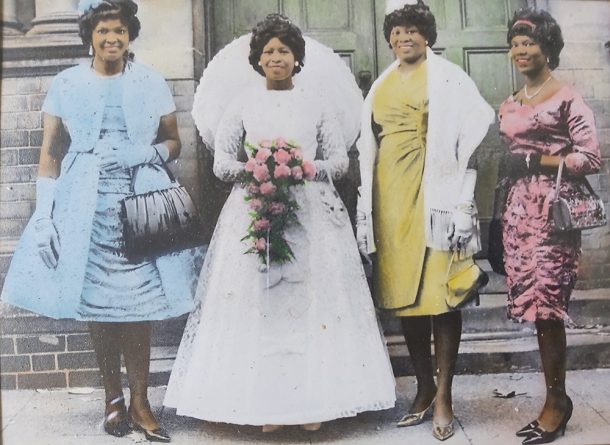
“This photograph was taken in Leicester, at the first wedding attended by my mother, aunt, and their friend from our village in Antigua. The bride had shared a tiny cabin with my mother and several other women who had never been away from home, on their journey to a new life in Britain.
“On arrival, the cultural distance travelled was exemplified by such shared unforgettable experiences as their first sight of snow, and their first encounters with people from Africa, with whom they shared a traumatic ancestry; explored in their exuberant appreciation of fashion, as an expression of their inner, unspoken, emotions.”
Bumi Thomas
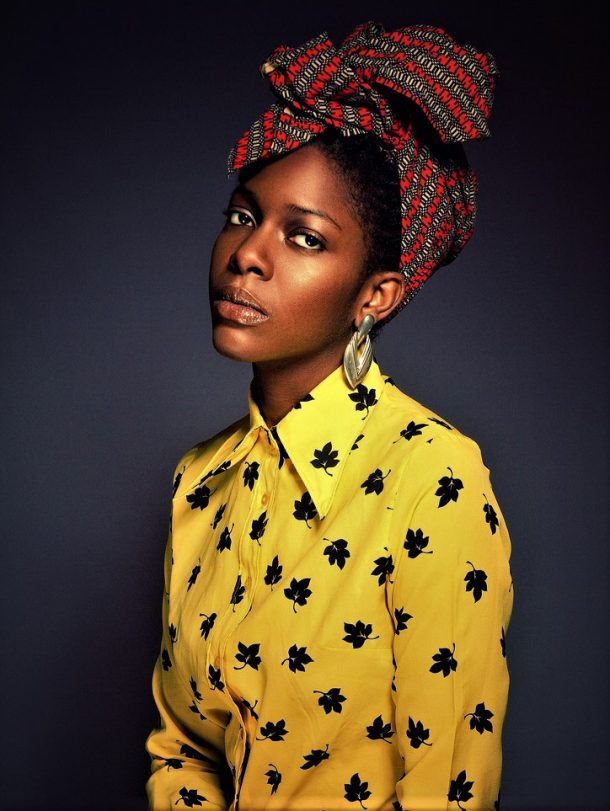
“This photograph was taken for my debut EP Feather Pearl by my dear friend Richard Barr. I had no idea at the time that it would become a symbol of defiance against migratorial injustice in the UK. My sense of personal style is the fruit of my parents’ flamboyance; I always ensure I have a part of them on me when curating and expressing my identity aesthetically.”
Headwrap: My mother’s wrapper
Style: Yoruba gèlè, from my father’s Klan
Top: 1970s shirt from a vintage shop in Soho
Earrings: Silver – a gift from a friend
David Bromfield
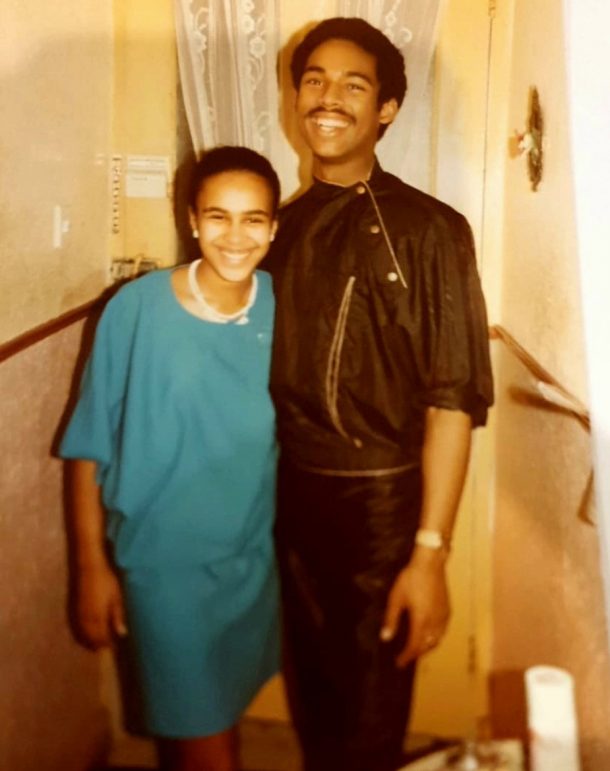
“My sister Hyacinth took this photograph of me and my girlfriend during my 21st birthday party in February 1984, at the family home in Battersea, South London, England. My girlfriend and I had escaped the crowded rooms of revellers to capture this memorable moment. I call this photograph Two’s company. We did not need anyone else to be happy – all the guests were just the icing on my birthday cake.
My outfit was designed by Theodene James, a student at Morley College, studying Fashion. I wore it the very first time I modelled on a catwalk for Theodene’s final year project show. This led to many other modelling assignments around the country. It was my best outfit, bespoke, a one-off!
My top was a loose-fitting, black, crew neck taffeta shirt edged with gold piping and brass coloured press studs. The trousers were a mix of smooth rayon and durable polyester. I wore black patent shoes and white socks, a homage to Michael Jackson. I accessorised the outfit with my parental birthday gifts, a gold watch and a gold ring containing a black onyx stone. Theodene lived close by, and I was quite involved in the design process. The outfit combined style with comfort and a hint of glamour. The colour black was a formal classic statement, the gold highlights matched the golden gifts of my 21st birthday – a family tradition I wanted to maintain. The loose outfit befitted a party style because I could not stop dancing to the funky jazz of Chick Corea.”
Esther Agbettor
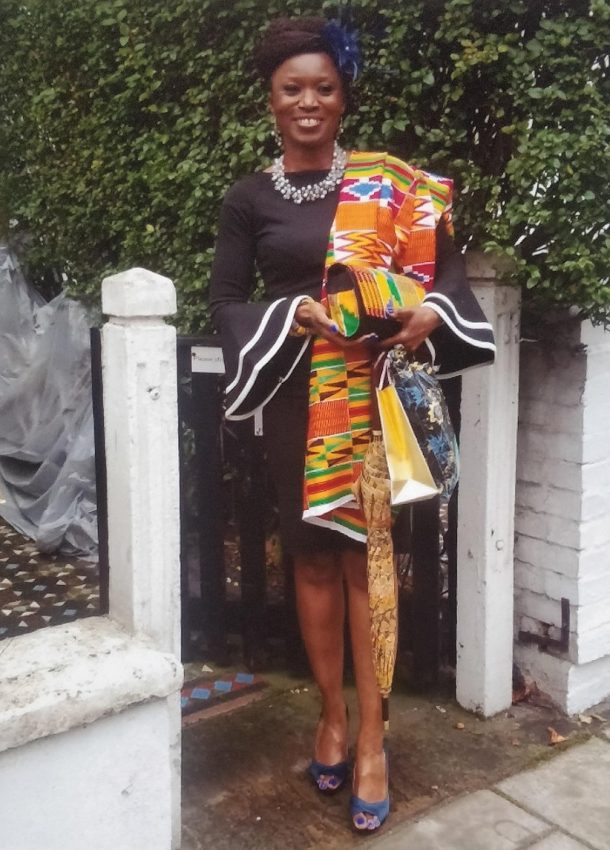
“This photograph of me was taken in London by my brother on our way to a beautiful family wedding in October 2017. This outfit that I put together is what I would describe as a ‘Brit-Ghanaian’ look.
Not wanting to spend excessively, I chose a contemporary look, going for the classic monochrome dress from a department store, with its elaborate sleeve cuffs. I carefully selected my Kente cloth with vibrant colours to complement the dress for the occasion.
By draping the Kente cloth over my shoulder it created the elegance I wanted, and with my matching Kente clutch bag and neutral jewellery, it completed the look I had in mind. The colours of my shoes and fascinator were also taken from my Kente Cloth.
The whole look fitted the day perfectly and my mission was accomplished. The wedding was great!”
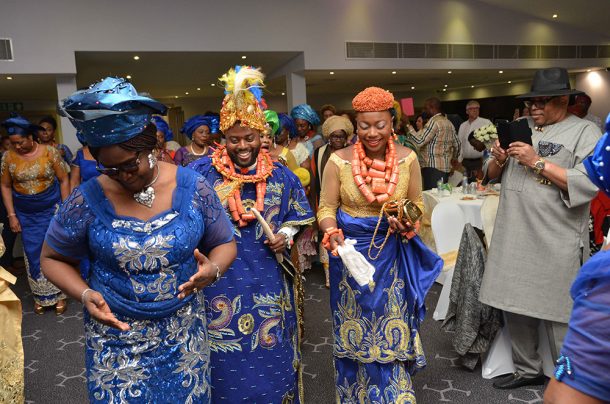
“The day my sister, Nicole Omeye Howell, got married to her husband was a good day for us all as a family. The happiness we shared, the rich fabrics and colours worn by the close family members and friends really showed the love and support family holds. The bride and groom both wore traditional marriage attire, normally worn amongst the Port Harcourt people of River State, Nigeria. These were paired with cultural accessories such as a hand beaded staff, coral beaded headpieces embellished with feathers and heavy coral and gold beaded jewellery. This would be the second outfit change for the bride and groom, and both outfits were tailored to fit the couple’s individual styles. This particular fabric is called George, and normally varies in colour, weight and textile. This George was chosen and sourced by the groom’s mother, from her local fabric manufacturers in River State. The colours were chosen by my sister to continue with the blue and gold colour scheme that she wanted throughout her special day, as they are colours she loved growing up.”
Martina Attille
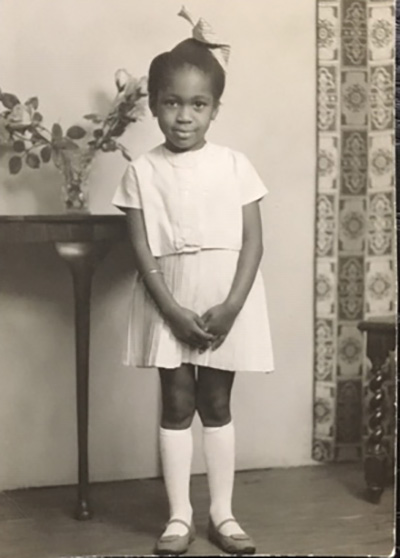
“My mother dressed me in a pink two-piece pleated skirt suit with a short sleeve jacket sporting a bow trim, punctuated with a jaunty ribbon to adorn a perfectly coiffed three-plait hairstyle. Gold accessories emphasized the celebratory styling of a ‘Sunday best’ presentation of a much-loved child. Today, my 91-year-old darling mother kisses the photograph and smiles, saying, ‘My princess’.”
Maureen Anett Salmon
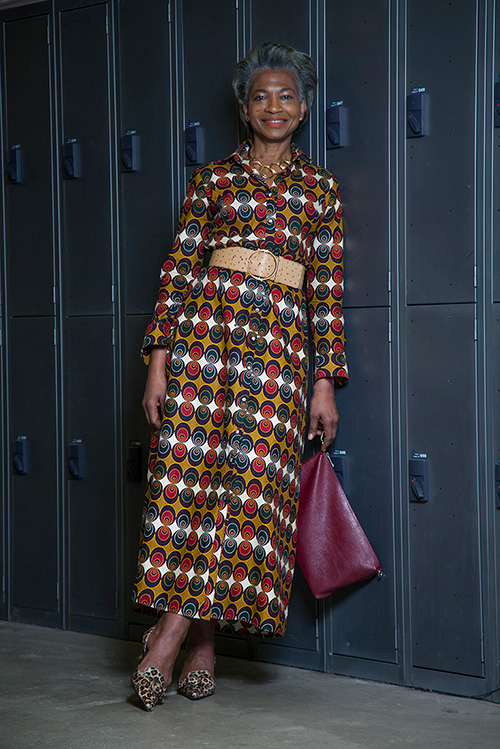
“Growing up in a newly independent Jamaica in a family of dressmakers and surrounded by elegant dressers, I cultivated a personal style, now an established personal brand. The story began in Africa in 2018 – I bought the fabric at Marche HLM5 market in Dakar, Senegal, and co-designed it with Abdoulaye Barry, Khorey Couture, at his workshop.
“The dress was inspiration for the design of the poster of ‘Made in Jamaica’ – a self-curated exhibition of my personal story commissioned by the London College of Communication Library, in 2018. At Africa Fashion Week the dress caught the imagination of fashion blogger and photographer Pat Lyttle and he featured it on his blog site. The dress is now synonymous with my personal brand, African Sensibilities, and continues to spark interesting conversations.”
Nkechi Noel
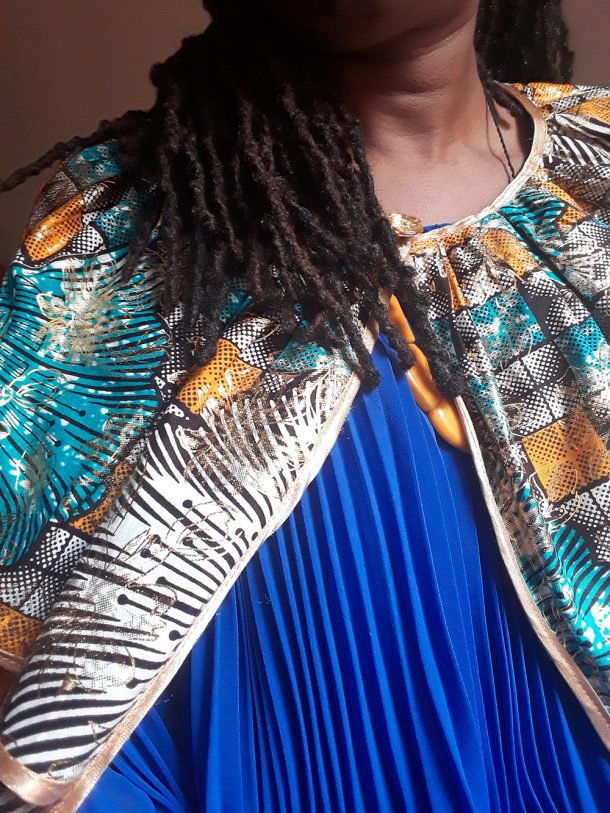
“It is customary for Nigerian elders to wear traditional attire to weddings, births, and burials. Purchasing your attire starts with the query of ‘what is your colour palette?’. This comes into its own when there is a special entrance to the chosen music backdrop. The dance results in a magical moment where Aunties are suddenly healed of any ailments, there is no joint pain, and the walking cane is thrown to one side. Miraculous miracles are performed at the junction of joy. Pain is discarded for Fela, and King Sunny Ade, and their contemporaries, Burna Boy, and Wizkid. I co-designed my cape with a friend, for a previous family occasion. By adding my colour palette to the border of my cape, a narrative was created, bound by our friendship. Here I was reviewing my colour palette days before a wedding. I realised that I continued the tradition in my own way, a mixture of cultures, a born and bred Londoner but always keeping my Nigerian heritage. I stomped my feet to the calling of the dance circle, where I was full of memories of sweet joy! I am serenaded by the sounds of Prince Nico, ‘Sweet Mother, I never forget you for the way you suffer for me’.“
Ray Mahabir
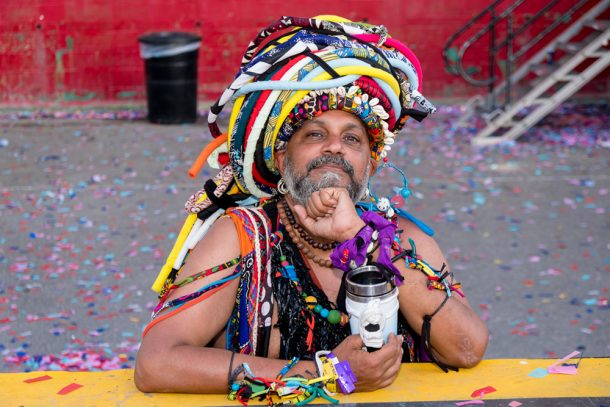
“When I look at this photo of myself taken at the Socadrome in Port of Spain during Trinidad carnival 2020, it makes me feel content within myself. As a carnival designer based in Brixton, the richness of the culture of carnival present in the photo represents my true cultural identity as a Trinbagonian, my Indian indentured labour roots, and my rich Caribbean African carnival culture. This photo is a true representation of the richness of Trinidad and Tobago.
This photo also reminds me of a Sadu man (an Indian holy man) transformed and embellished in African fabric, representing the essence of carnival transformation. I chose this costume as much of my work is based on textiles, and in the Caribbean, I was a fashion designer.
For me, home is where the heart is. Before relocating to the UK, I never had to tick a box to define my cultural identity. I was Trinidadian – in the land of a rainbow of people, where everyone found an equal place. It was so strange to come here and tick the box to identify as either Caribbean, African or Asian and not find an appropriate box for me. I find myself settling for ticking the ‘OTHER’ box, as I was not African Caribbean, I am Indo-Caribbean.
I always refer to Trinidad as my land of birth, the place I originate from, my roots, my heritage, and my culture. Identity is all about how you see yourself and not necessarily where you are, but the various parts that come together that make us dynamic, unique individuals. This photo and costume have a mixed representation of who I am and how I feel. I am Indian, I am part of Carnival, the diaspora that shapes it and its roots within African culture.”
Uju Obi
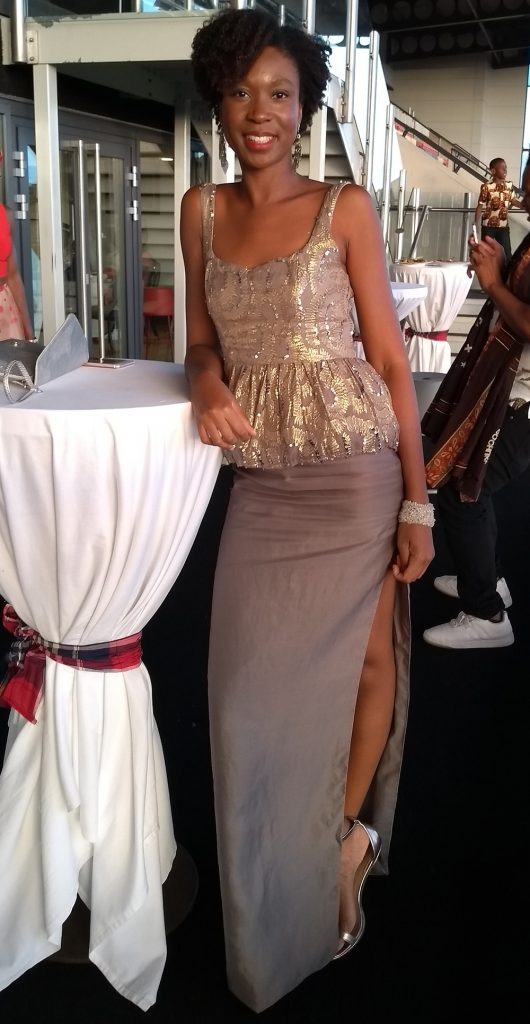
“This is a photo of me at a traditional Igbo wedding. I am an award-winning Artist and Designer, and I made the skirt and top myself. I usually use lots of different mediums whilst making art, but textiles is one of my favorites. This is the first, and only full outfit I have ever made. I was feeling particularly creative one day and thought it would be a fun challenge.”
Adult Focus Group Memories
David Bromfield
I learnt about the Africa Fashion Focus Group from my friend Dr Michael MacMillan, who curated The Front Room, formally The West Indian Front Room exhibition. My interest was ignited by the chance to do as he had done, and add to the unheard voices, histories, and stories of Black Britain. The Africa Fashion exhibition provides an accessible, authentic, and engaging way to promote those voices and to share the creative energies that produce them. As a former Headteacher and former BBC journalist, this is a narrative I have tirelessly woven into my work, but with limited success. The V&A has the status and reach to succeed where I have failed. I trust that this exhibition, in addition to being a museum exhibit, will eventually form part of a coordinated educational programme that links Black history, fashion, lifestyles and sustainability. Happy to help…
The Focus Group allowed me to engage with and learn from a wonderful group of curators, current fashion experts and practitioners. It was also a stimulus for deep reflection as I relived my time as a young Black man in 1980s London and my incredible fashion experiences. I am grateful for this opportunity and to have played a tiny part in this valuable and inspiring work. I am now inspired to take up modelling again – we shall see!
Esther Agbettor
It was such a lovely opportunity to be part of the Africa Fashion Focus Group. Being a staff member at the V&A and working directly with the public, it was the chance to put forward the desires and expectations of our visitors of the African Diaspora who would visit the museum and experience little acknowledgement of their heritage.
Sharing thoughts, experiences, and ideas with like-minded people, all working towards a common goal was exciting and empowering, knowing that our voices would – at least for this exhibition – contribute to correcting outdated views, perspectives, narratives, and interpretations.
It was satisfying to help shape current and hopefully future exhibitions, programmes, and events that truly represent the African Diaspora. With the many ideas generated during the Focus Group sessions, I can only hope that these set the benchmark within the museum to continue to engage with audiences to get it right. I now have good news to share with our visitors.
Martina Attille
The Africa Fashion Focus Group was an opportunity to contribute and listen to a range of perspectives in response to the material objects of clothing and the performativity of clothing across a spectrum of African diaspora experiences. This after-hours activity – in which museum staff parleyed with individuals who share a commitment to the power of objects to tell stories – is at its most intense when issues of ownership of the stories and the choice of voice are at stake.
Maureen Anett Salmon
Coming out of the Covid-19 pandemic lockdown, I really enjoyed bonding with this amazing intergenerational group, mainly women of African heritage with shared interests. We were focused, collaborative and insightful in sharing our knowledge and experience. This was empowering, and I found myself making a case for the acknowledgement of the social and economic value of African fashion on the continent and globally.
I want the legacy of the exhibition to shift the public’s perception – to see the value of African fashion; engender a more inclusive, ethical, and equitable approach to research and curatorial practices at the V&A; and for the Focus Group to continue as an independent voice and resource for the V&A.
Nkechi Noel
I joined the Focus Group as I wanted to gain a deeper insight into plans for the forthcoming Africa Fashion exhibition. I was also curious as the V&A, to my knowledge, has never produced an exhibition specifically on African Fashion.
What I liked about the group was the opportunity to listen and give feedback from a variety of perspectives. Interpretation of language and images were especially important themes that I came across, which I took as fundamental. The need for understanding and empathy could not be stressed more. I like to feel that I made a positive contribution by engaging in topics.
We need to build Focus Group relationships that are ongoing, to nurture awareness and gain direct feedback. It would be good to reflect on the exhibition once it is over, to explore what worked and what could be improved next time around.
Ray Mahabir
I was asked if I was interested in joining the Focus Group by Janet Browne, who I have known and collaborated with for almost 20 years. For me, being part of this group has enriched my work, not only as a carnival artist, but also as a Trinidadian and a fashion designer. I hope this exhibition will enable its visitors to truly acknowledge the expansiveness and richness of what Africa has contributed to the world through fashion and culture.
Selene Heath
Being part of the Africa Fashion focus group was a very positive experience, as I enjoyed discussing and feeding back my ideas with the immensely skilled and diversely fascinating people involved.
For me, our group time together really highlighted the power of the collective, the power to engage people with institutions and amplify unique stories. I feel that it brought expanded learning experiences for all involved, as we shared the richness and nuances of our varied lived experiences.
I hope the legacy of the focus group will be that it continues to create further cultural opportunities for underrepresented communities to engage with arts and culture.
Uju Obi
A friend forwarded the Africa Fashion ‘call-out’ request to me, and as I have a wide-ranging interest in all things art and design, I thought the Focus Group would be a wonderful opportunity to be involved in the planning and development of the exhibition. I enjoyed getting a glimpse behind the scenes, seeing the Curators’ and the team’s ideas and thoughts. I hope the exhibition will introduce new audiences to the wealth of creativity of the people of Africa and will open the conversation about African art and design. I believe our Focus Group members can support the museum’s endeavours to engage audiences, by acting as ambassadors at events or within their networks.
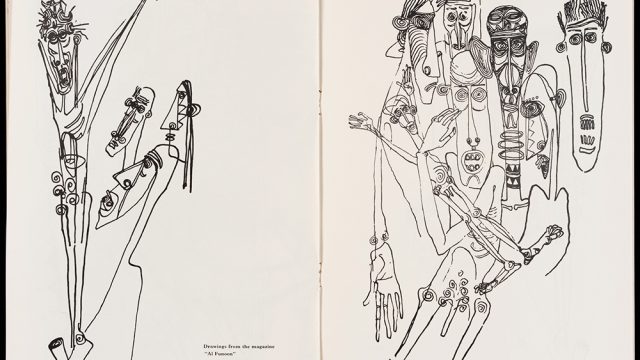
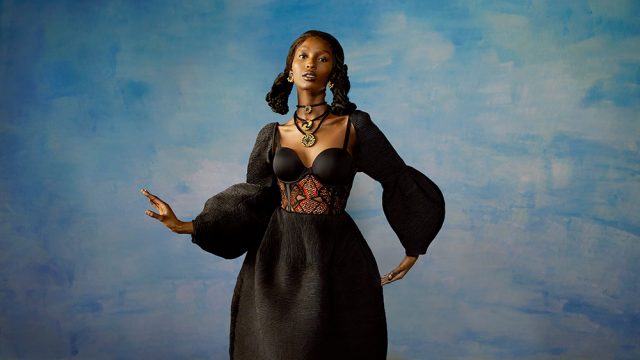
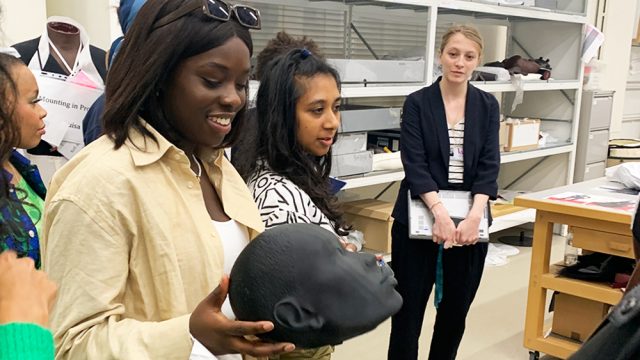
Would love to find out exactly what was asked and individual responses to the survey. Is there any way to find this out as currently working on my research, searching for details thought I’d reach out. IF anybodies able to help please let me know.